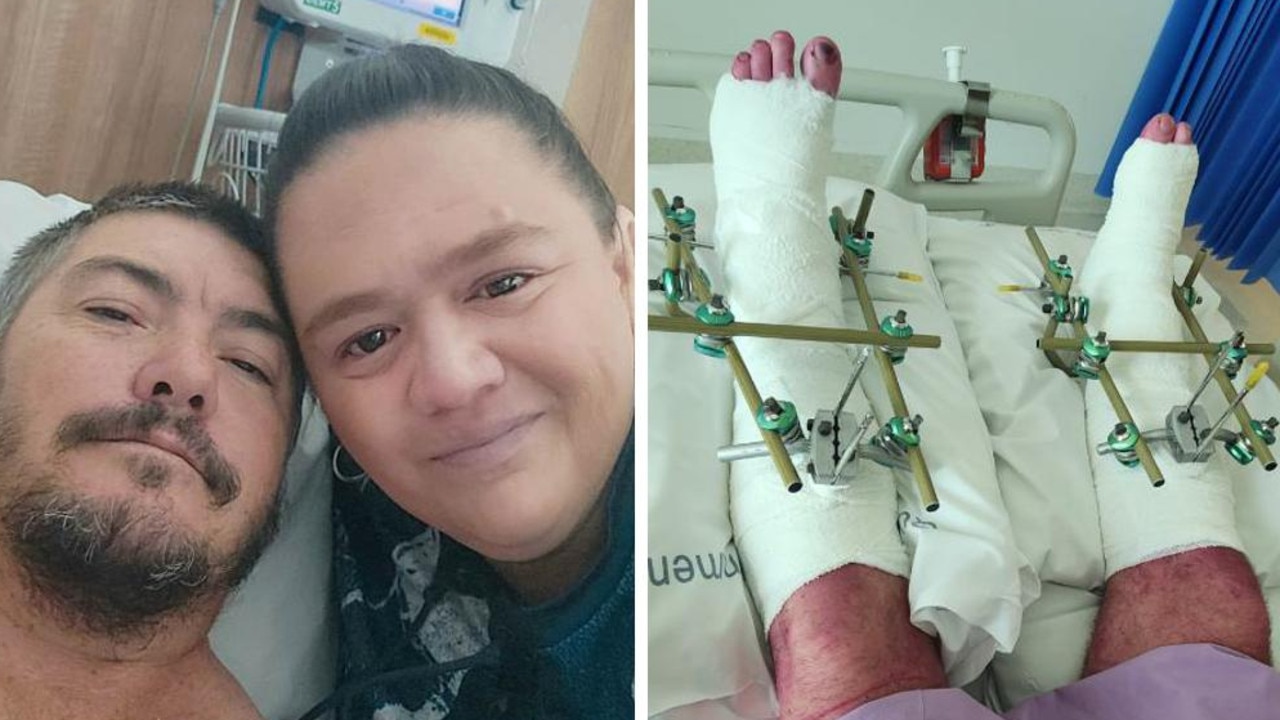She died four times and came back with a laugh
Motorbike lover and tattooed amputee Chloe Callander uses humour to get past her darkest moments.
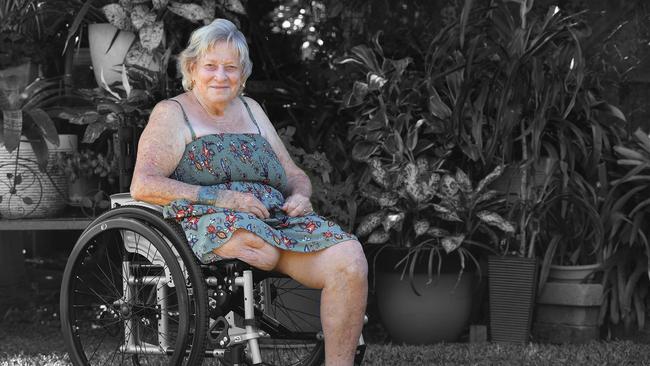
Community News
Don't miss out on the headlines from Community News. Followed categories will be added to My News.
MOTORBIKE lover and tattooed amputee Chloe Callander uses humour to get past her darkest moments.
At age 70 and widowed, she decided to focus on herself but she could never have predicted what would come her way.
"In 2008, my husband Jim (Miller) passed away. He had such an awful ending; I thought 'well, what do I want to do with the time I have left'," Ms Callander said.
"Well I love tatts, and I love bikes- so I went and got my tatts and my licence. Everyone thought I was just nuts.
"I thought 'well the end's coming up and I just wanted to do something for myself'."
August 5, 2012, is the day Ms Callander will never forget. Aged 72, she jumped on her motorbike and joined her bike club for a ride to Midge Point.
As the bikes meandered along the route at a slow pace, Ms Callander had a microsleep and veered into the path of an oncoming vehicle.
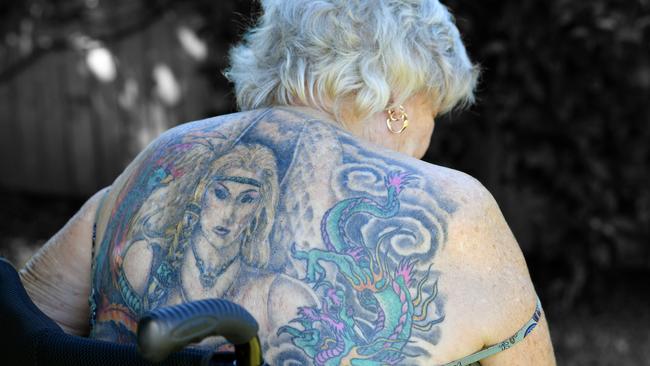
"I was at the back of the group, I dropped off to sleep and went under a four-wheel-drive," she said.
"I lost my leg there and then, but I didn't know it."
The RACQ CQ Rescue Helicopter took her to hospital.
"I spoke to the doctor who was on the helicopter that day, and I asked him why he didn't just let me go because I don't want to be like this," she said.
"It sucks, especially when you're used to going and doing what you like. No one with two legs thinks about having to get up and walk; you just do it."
BEYOND THE SCARS: Why Tiana is stronger inside and out
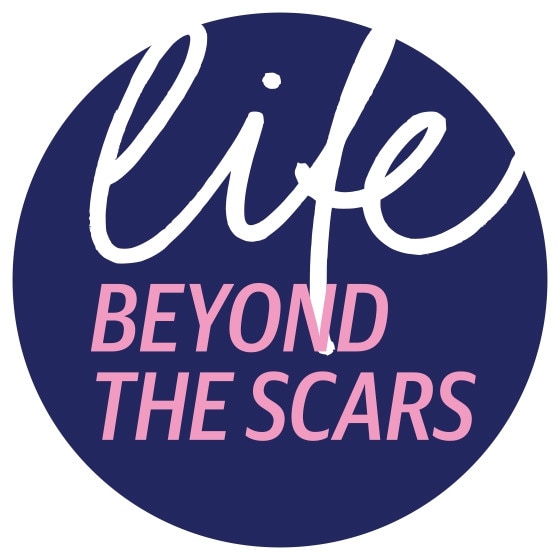
Ms Callander was "pretty smashed up".
"They told me I died four times. I said 'why am I here then? You had the chance to let me go - why didn't you just let me go'," she said.
"They said 'no' we want you here and I said they (heaven) must have kept the bloody gates shut. My mother must have been there saying 'don't let her in'." she laughed.
Ms Callander spent seven and a half months in the hospital. As well as losing her leg, she had multiple fractures to her arms and injuries to her other leg.
"I couldn't use my arms; it was months before I could do anything for myself," she said.
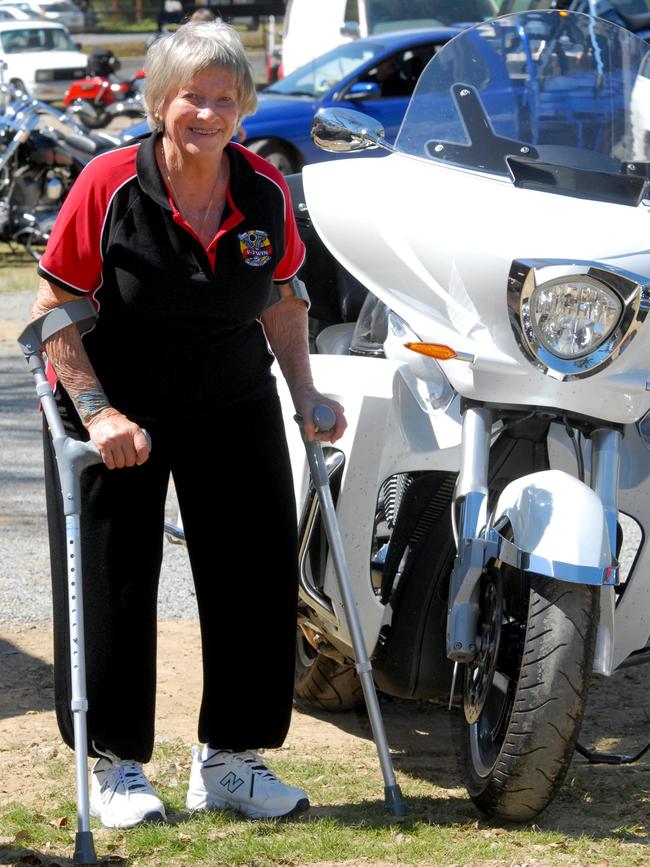
She began to use a prosthetic leg but decided it was not for her. She felt safer without it.
"All I could envisage was me walking down the street, the prosthetic leg letting go, the other leg not holding me and there I'd be splat. I couldn't take the worry of it not holding on," she said.
"I only use my chair now."
Now in her 80s and living with her son Brett Harris, Ms Callander said her greatest difficulty was not being completely independent.
"You can't do what you want to do, and that doesn't go down well with me," she said.
"I was so busy doing everything I wanted to do, and when you have two legs, you just don't think about if you can or if you can't. Now there's so many things I can't do," she said.
"I used to be strong, but as I get older, I'm finding it harder."
More stories:
Shark attack survivor Justine Barwick speaks after attack
How a daring plot allegedly unfolded
BIG READ: Shandee Blackburn's final walk home
SPY TALES: How Peter Wallace became a prisoner of war
TRUE CRIME: Eight chilling crimes that rocked Mackay
TRACKER: The mega sharks lurking off our coast
What it's like cleaning Mackay crime scenes, meth labs
These days, Ms Callander tends to her garden and looks forward to visits from her friends. She still needs medication for pain relief, but her strong nature and humour keeps her going.
"I went to the Queen concert, but as soon as they struck the first chord, you know what happened? All those bastards stood up, and I couldn't see a bloody thing. I was that livid I just wanted a shanghai with a pocket full of rocks," she said.
Her philosophy is, just get on with it.
"Shit happens, and you have just to suck it up," she said.
"You do what you can and what you can't, you can't. You don't have a choice."
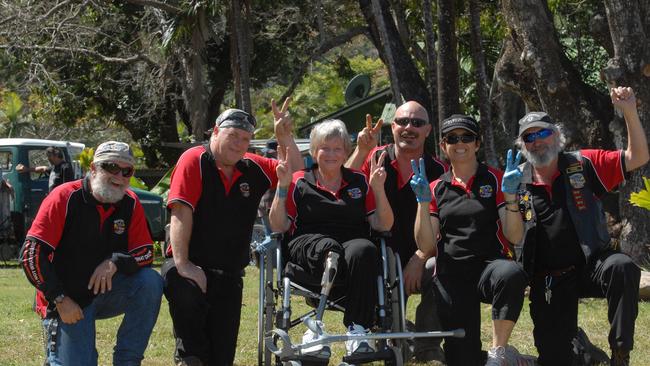
Ms Callander doesn't think about the accident or her situation.
"I would get too upset or depressed, so I make jokes. I like fun and happy stuff," she said.
"I'm not poor me, bad things have happened, but my mind is the strongest thing I've got so I just tell myself to focus on the good stuff."
If anyone is in a similar position to Ms Callander, her advice is simple.
"If you're stuck here and not going through the pearly gates, you just have to get better, manage your pain," she said.
"You've got to have a plan or something you'd really like to aim for."
With a cheeky glint in her eye, she said: "I'm aiming to get a trike but there is not one person who's with me. They're all against me".
LOSING A LIMB
RECOVERY for Chloe was long and painful.
CQUniversity psychologist Chris Crawford says the process is different for everyone.
But he said amputations were more common than most people realised - though mostly because of chronic illness.
"Diabetes accounts for 80 - 85 per cent of the number of amputations in Australia and in Australia each year there's nearly 4500 amputations done in hospital," he said.
"The normal reaction is to focus on the loss of the limb and a lot of that has to do with the fact the patient is facing physical pain, physical recovery and phantom limb pain.
"So, there's physical pain and physical adaptations that need to be engaged in by the client, but there's also a lot of emotional stuff going on.
"That emotion often is anger, and the anger is because it's happened and some of that anger can be self-directed, there will be feelings of loss, not just the limb, but the loss of mobility, the loss of the quality of life, and then finally people can get depressed.
"From a psychologist standpoint underlying that, there are a range of cognitions, a whole bunch of thoughts, the way we interpret the world.
"And those thoughts often can go along the lines of initially questions like 'will I be able to recover? how will my quality of life be? how will my family perceive me?'.
"There's a whole bunch of questions which are often a bit negative and the answers tend to lead people to ruminate, they focus on the loss, they focus on what they don't have, they focus on what's gone and they focus on the difficulties they are going to face, such as mobility, work and just simply getting around to the shops, as an example."
Subscriber benefits:
How to make the most of your digital subscription
Daily puzzles and Sudoku another reason to stay subscribed
Mr Crawford said an interdisciplinary approach was crucial in aiding a smooth recovery.
"You need a medical officer who has a speciality in pain so they can manage that, pain is inevitable, and the phantom limb pain can be very difficult to manage," he said.
"The clinical nurses are there to help with wound management and to help the stump to recover and if there's any emerging problems.
"The physiotherapist is there to literally help them to get back on their feet, to help them learn how to use a prosthetic, to use crutches and ideally that physiotherapist is a specialist, he knows how to work with people who are using prosthetics.
"The occupational therapist is there to say this is what you can still do, this is what your capable of doing or we can make modifications to your house of modifications to your car, whatever it may be.
"Then social workers are an important part because they can help with the family and social relationships that might be changing.
"Finally, then there are psychologists, people like me, who help them address those thinking patterns and emotional patterns and emergent behavioural patterns which may not be helpful.
"So, an interdisciplinary or multi-disciplinary team is essential, and the research shows consistently that that's what leads to the highest level of recovery and the highest quality of life.
"Often people kind of just look at the physical stuff and will forget the social side, the psychological side and those things need to be addressed effectively as well. It's the whole person not just their physical body, it's how they think, how they feel and how they interact with others.
"When you look at the research overall, what tends to help people recover most is making this transition from what they have lost to what they still have and what they are capable of doing.
When people make that transition, their lives generally change, and they adapt to this new set of circumstances."

